Anti-racism in the Early Years
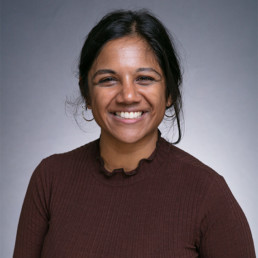
Written by Rachna Joshi
Rachna is a teacher and consultant. She works with under-threes, Nursery and Reception children, and holds an MA in Early Childhood Studies. Rachna writes and speaks at events sharing experience and knowledge, empowering practitioners and provoking questions to disrupt routine practice. She supports schools by guiding educators to implement inspiring practice that reflects their classes. She works as a freelance consultant and with the Froebel Trust as a travelling tutor.
Originally published for Early Education in 2020:
https://early-education.org.uk/guest-blog-from-rachna-joshi-anti-racism-in-the-early-years/
Introduction
Race and racism in society is as important as ever; I am writing not only as a British South Asian who has experienced racism, but as an ally against white supremacy and anti-Black sentiment that perpetuates our consciousness.
Structural racism is insidious, and we need to look at ourselves and think about the messages we perpetuate. The racism that comes through our thinking, language and gestures shows the undercurrent of white supremacy in the ways that we perceive the world.
Context
This was written to respond to the systemic racism in education as a profession.
It is great that some people are more aware and doing what they can to ‘be anti-racist’, but this needs to continue – it’s a movement, not a moment.
There are many problems with systemic racism in Early Childhood settings, and I hope to provide some suggestions and links for your own reflective practice –I can’t tell you what to do, it is your journey and up to you to educate yourself, but I hope this helps on that journey.
Reading articles on racism may be uncomfortable, as it is an upheaval of what we know, and what is normal, and this is because ‘normal’ is inherently racist. I want to ask questions that may not be answered here, because this is a point of introspection and individual responsibility when it comes to looking after our children and being ‘players’ in a wider world. You need to ask yourself questions, consider who you are and what your call to action is for change.
Classrooms
Often as Educators we are seen as though we are already doing “the good work”, yet this topic brings about a space for deep introspection. When you set up and manage your classrooms ensure representation is embedded and not an ‘add on’. White, cisgender heteronormativity cannot be the default.
Classroom changes need to look beyond book corners and skin colour paints. Colleagues shared with me the lack of thought behind some small world people resources as the shop only provided white people. The representative resources already exist, unfortunately it is not mainstream, but this needs to change. Audit your dressing up clothes, food items and hair related products for your role play areas – ask parents to donate items. Tune into and value the voices in the classroom that come from wider communities. Consider the characters and stories that are shared – what message is being shared around skin colour, femininity and hair when using Frozen characters for example?
Development Matters and the EYFS People and Communities ELG explicitly reference “similarities and differences between themselves and others, and among families, communities and traditions” if we decipher the curriculum through this lens we may see that we should already be exposing children to a variety of cultures to provide opportunity for discussion with children. Presumably these statements are based on the research that expressions of racial prejudice peak by age 4 or 5 (Aboud, 2008). However, often we only hear about wider cultures and practices through celebrations: Eid, Diwali, Hannukah, Chinese New Year, this ‘add-on’ doesn’t provide the deeper discussion of cultures and values that encompass the everyday for the children that celebrate these festivals. What are you doing to ensure that all communities are represented and respected? And how do you incorporate these communities into your usual practice and provision? How do you ensure that your practice provides a wider perspective?
Curricula
There needs to be deeper consideration of how curricula can be decolonised, ensuring key figures are discussed and explored. It is not enough to teach the history of enslavement and civil rights (which are important stories that represent the struggle so many marginalised communities have experienced) it is about countering the narrative that to be non-white is not normal.
“Cultural capital” needs to include key public figures, artists and musicians, but also everyday heroes that children may see in the community. We want our children to have a foundation of curiosity, knowledge, and respect for differences, so that they don’t absorb the idea that the lives of black, and other people of colour are only about struggle.
Acknowledging cultural capital means noticing, celebrating, and valuing difference. Most schools celebrate white men- Samuel Pepys when learning about the Great Fire of London, Pablo Picasso, Charles Dickens, William Shakespeare, Buzz Aldrin and Neil Armstrong in the recent Moon Landings celebrations. Where are the Black people? Are we giving an accurate representation of history if the only figures we see are white men? What about Mary Seacole, Steve McQueen, Katharine Johnson, Ai WeiWei, Anish Kapoor?
To question my own biases when planning curriculum drivers, I have begun to ensure a set of questions are on the top of every curriculum document:
- Have you addressed sustainability?
- Have you shown a variety of families/gender roles?
- Have you included characters and perspective from a variety of backgrounds, especially those who are under-represented?
- Have you included stories that show a range of emotions for discussion?
- Is there an opportunity for cultural capital?
Cultural practices are often forgotten and seen as an ‘add on’. An example might be a discussion of eating with hands vs. eating with knives and forks – some things that might be seen as a norm in one culture is the opposite in another. Have you made space for this in your classroom and your own understanding of your children and their cultures?
Reflection and Response
Are you prepared to discuss race, or answer a question on race when it occurs in the classroom and ensure you have done best for that child?
Ensure you are prepared to talk about skin colour, culture, religion so you’re not scrambling for words when a child asks a direct question about these things. Have you spoken to families to ask them how they have approached discussing skin colour? How are you ensuring families feel confident to discuss race?
Ultimately as practitioners we are familiar with constant reflection, but it takes more to look closely at the implicit bias that we perpetuate. Don’t be afraid to talk about it, but make sure you research and read up – educate yourself. Make lifestyle changes that involve taking on these wider perspectives beyond your early education practice.
Leadership
What do your leadership teams look like? In predominantly white areas there may be little diversity, but is there diversity in the content that is taught to children? Are staff aware of the wider world and implications of their bias? Are staff considering the possibility of providing only a white view of the world to children? Is there a consideration from leadership teams to reflect on systemic racism in schools and settings, and how could this be tackled? Could your schools consider mandatory staff training on Black history, global non-white-led history and open discussion of unlearning of implicit bias (by consultants who specialise in this area)?
Are you questioning decisions that perpetuate anti-blackness and racism in your school? If you are white, do you stand up for your underrepresented colleagues, who may not have the privilege to stand up for themselves?
Institutions
When Early Childhood Education institutions are questioned, the inherent tokenistic nature of BAME representation is revealed. When representation is conceived through a lens of empty diversity that leads to tokenistic representation in chairs and boards, then what message does this send, and what actual intervention does this make in challenging implicit bias and institutional racism?
The government response to including Black History and minority ethnic representation into the curriculum was that it is up to teachers to do this (see petition response). Where in Initial Teacher Training is there a discussion of systemic racism and bias and how practitioners can support BAME families appropriately? In Early Childhood academia, a privileged position to be in, majority of academics are white and therefore research continues to remain whitewashed.
A large part of the wider work to tackle racism is to look at our institutions and policies. Our institutions are built upon racist ideologies and anti-blackness. There are petitions to change how our curriculum looks at a wider policy level but these are often rejected. There needs to be a whole government strategy, that needs to be continually lobbied by all Early Education influencers and those in positions of power who are allies in this movement.
Further Reading
Blogs and Articles
Laura Henry-Allain’s article in Nursery World
Kate Moxley’s podcast discusses blackness in Early Years with Liz Pemberton and “The Early Years Orchestra” episode with Jamal Carly
An Abolitionist Coalition Grassroots Movement in Education
US based article writing about racism in preschool
Nursery practitioner David Cahn writes about allyship and racism in Early Years
Decolonising curriculums
Practitioner’s roles in decolonising curriculums
Reflection on anti-racism in schools
Making changes to the curriculum
Parliament response to Decolonisation of curriculum petition
Talking race with children and families
How to respond to children when they ask race related questions
Parents guide to Black Lives Matter
Social Media Accounts to Follow
Black Nursery Manager Instagram @theblacknurserymanager
The Conscious Kid Instagram @theconsciouskid
Jamal Carly Instagram @Jamal.Carly
JossyCare Instagram @JossyCare
Laura Henry-Allain Twitter @IamLauraHenry
Resources
National Literacy Trust Book list
Spud and Yam Irish and Jamaican musicians
Black History Resources for UK schools
References
Aboud, F. E. (2008). A social-cognitive developmental theory of prejudice. In S. M. Quintana & C.
McKown (Eds.), Handbook of race, racism, and the developing child (p. 55–71). John Wiley & Sons, Inc.
Empowering Through Education: The Rastafarian Scheme of Work
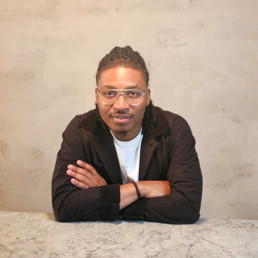
Written by Johnoi Josephs
Johnoi Josephs is the Associate Assistant Principal at a school in West London where he specialises in Behaviour, Attendance and Pastoral Programmes. He also teaches RE, Citizenship and Sociology. As well as teaching he is the co-founder of Black Men Teach which aims to build a space where Black Males and Boys can thrive in education. For him, BMT is important because representation matters in all sense and so we need to illustrate presence in every industry/profession. Johnoi aims to live a life of servitude where he is able to make as much impact as possible when it comes to education.
In the pursuit of a more inclusive and culturally diverse education system, it’s essential to recognise the power of representation. As a black male teacher from Jamaica, my journey in creating the Rastafarian Scheme of Work was fuelled by a desire to pay homage to my roots and provide students with a curriculum that embraces their own cultural identities. This endeavour was not only a personal passion, but a fundamental step towards decolonising the curriculum.
The Inspiration
The spark for this project ignited during a conversation with a friend. We delved into the complexities of decolonising the curriculum, particularly within Religious Studies. It was clear that this endeavour required a nuanced approach. Armed with this newfound determination, I set out to create a curriculum that would bridge the gap between mainstream education and the rich tapestry of Rastafarianism.
A Journey of Dedication
Crafting the Rastafarian Scheme of Work was no small feat. Balancing it with my other responsibilities was a challenge, but I knew this endeavour was a crucial step towards a more inclusive educational experience. I dedicated days of my summer holidays to ensure that this curriculum would be comprehensive, engaging, and transformative for students.
Empowering Through Knowledge
The Rastafarian Scheme of Work is a meticulously designed curriculum that empowers KS3 students with deep understanding of Rastafarianism. This comprehensive course comprises:
- Seven Detailed Lessons: Each lesson is designed to provide students with a holistic view of Rastafarianism, encompassing its origins, beliefs, practices, and cultural significance.
- Medium Term Plan (MTP) Breakdown: This plan outlines the progression of the curriculum, ensuring a seamless and immersive learning experience.
- Knowledge Organiser: A valuable resource that condenses essential information, allowing students to review and reinforce their understanding.
- Assessment: A tool to evaluate students’ grasp of the material, providing valuable feedback for both educators and learners.
- Extra Resources: Supplementary materials enrich the learning journey, offering a well-rounded exploration of Rastafarianism.
The Power of Representation
Incorporating diverse perspectives and cultural awareness in education is not merely a matter of political correctness, but a fundamental necessity for the holistic development of students. Research consistently demonstrates the profound impact of representation on learning outcomes, social integration, and well-being.
- Enhancing Learning Outcomes: Inclusive curricula positively affect student motivation and achievement levels, leading to higher academic performance.
- Fostering Inclusivity and Belonging: Representation in education helps foster a sense of inclusivity and belonging, leading to increased participation, improved social integration, and a stronger sense of community within the school.
- Cultivating Empathy and Global Awareness: Exposure to diverse perspectives cultivates empathy and a broader understanding of the world, a critical skill in an increasingly interconnected and globalised society.
- Mitigating Stereotypes and Biases: Inclusive education challenges harmful stereotypes and biases, fostering a more accurate and nuanced understanding of different cultures and identities.
Transforming Schools: A Call to Action
Given the wealth of research supporting the importance of representation and cultural awareness in education, educators must take proactive steps towards decolonising the curriculum. The Rastafarian Scheme of Work is a prime example of how a curriculum rooted in cultural authenticity can drive positive learning outcomes and empower students to embrace their identities.
By embracing diverse perspectives, we not only enrich the educational experience, but also prepare students to navigate an increasingly diverse and interconnected world. Through inclusive education, we can truly empower the next generation to become compassionate, culturally aware global citizens.
Incorporating the Rastafarian Scheme of Work into your curriculum is a significant step towards creating an environment where every student from certain backgrounds can feel valued, seen, and heard. Together, we can work towards a more inclusive and equitable education system that prepares students for a future marked by understanding, empathy, and respect.
Trans People are Loved: Diverse Educators in Allyship
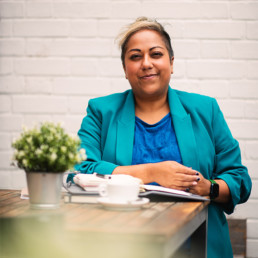
Written by Bennie Kara
Co-Founder of Diverse Educators
When a community comes together, beautiful things can happen. Here at Diverse Educators, we have witnessed the rise of transphobic narratives nationally and internationally and have felt, as many others do, an acute sense of helplessness about how to be active allies for the trans and non-binary people we know and love.
When we were approached by a member of the non-binary community in despair at hearing and experiencing such a wave of transphobia and gender critical rhetoric, we gathered associates and friends to discuss how we could do something, anything, to raise our voices and show that we could be ‘together-strong’. In time, this shaped into an evening solidarity event to take place virtually. We wanted to bring people together to signal, even in the smallest ways, that there is work to be done in protecting those who are increasingly marginalised in our society.
It was clear from the outset that we did not want to just focus on how difficult the social environment is for trans and non-binary people. We wanted, collectively, to use our voices to highlight both the reality for trans and non-binary people and the green shoots that we can see around us.
Our speakers were wonderful. Jo Brassington (they/them), a Diverse Educators Associate, outlined the legal aspects of trans and non-binary identities in schools. The wealth of comments and questions after their section showed that there is a real need for educators to have access to training on how to support and protect their trans and non-binary young people and colleagues. Hannah Jepson, (she/they) a business psychologist and expert in workplace inclusion, followed with a precis that highlighted the work of the corporate world in supporting trans and non-binary people at work. There were some enlightening comments in response showcasing best practice in the workplace. Finally, George White (he/him), a trans teacher and independent consultant/trainer on transgender identities and the Catholic faith, outlined the green shoots in how Catholicism is shifting the established narrative on trans and non-binary people.
Hannah Wilson, the speakers and I left the solidarity event feeling heartened that over 60 people had given their time to attend the event, with feedback that indicated a real need for follow up. While we knew that we wouldn’t be able to find distinct ways forward immediately, the networking and signposting that took place was useful in forging connections so that action can be possible in the future.
What we do in miniature creates ripples that, in turn, can create waves. This event served to show how much there is to do still in support of the trans and non-binary community, and each attendee was asked to pledge, if possible, what their next steps were using the hashtag #TransPeopleAreLoved. The pledges appeared like pebbles in the pond.
This is allyship.
Proud 2 b Me!!
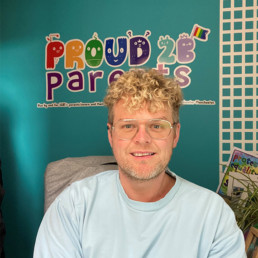
Written by Matt Taylor-Roberts
Matt Taylor-Robert (He/Him) is the Founder and Managing Director of Proud 2 b Parents and with his husband, Matt is an adoptive parent to their amazing son. He feels privileged to work for a regional adoption agency as an independent panel member and has previously worked for an independent foster agency within the same role. However, he had to step away from this role due to becoming a foster carer for this agency. Matt has previously worked within Children's Services for a local authority. To find out more about Proud 2 b Parents please head over www.proud2bparents.co.uk.
As a proud parent of a young person attending Proud 2 b Me, the UK’s only youth group specifically for children with LGBT+ parents or carers, I am constantly amazed at the benefits of this service and why there isn’t more like it across the UK.
Proud 2 b Me provides a safe space for young people aged eight and above to engage in various fun activities, such as kayaking, ice skating, and pizza making. However, the true essence of this youth group lies in allowing for discussions, offering support, and encouraging young people to navigate their unique family structures and be open about their identities.
Proud 2 b Me acts as a safe place where children 8 years and up can openly discuss their family structures and experiences, allowing them to explore and understand their own thoughts and feelings. The group sessions facilitate meaningful conversations about topics like handling prejudice, telling others about their family (‘coming out’), and embracing individuality. Witnessing my child interact with their peers, hearing their stories, and exchanging insights has been an incredible journey of self-discovery for them. The support received from like-minded individuals who face similar challenges has been invaluable.
Having inclusive spaces that celebrate diversity in all its forms is essential for children to grow and thrive, as well as meeting others from various backgrounds and family dynamics, the youth group encourages acceptance and develops a sense of belonging. By engaging in activities like kayaking, placard making and ice skating young people can develop friendships that extend beyond their family situations. They learn to appreciate differences, respect one another’s experiences, and build a strong support network that can be relied upon in times of need.
Coming out about one’s family structure can be a sensitive and complex process for some young people. Proud 2 b Me offers a supportive environment where individuals can openly discuss their feelings and experiences. The group provides guidance on how to approach conversations about their family structure with friends, classmates, and teachers, equipping them with the tools to navigate potential challenges confidently. Through discussions, and sharing personal anecdotes, these young people gain the necessary skills to articulate their identities and advocate for themselves authentically.
Peer support is the backbone of the community. Recognising the power of connecting with others who share similar experiences, the youth group facilitates friendships and support opportunities. The sense of camaraderie that emerges from these relationships is immeasurable. Young people can find comfort in knowing they are not alone and that others understand their journeys. The validation and encouragement received from peers empower them to embrace their identities proudly and combat any negativity they may encounter.
Proud 2 b Me provides a nurturing and supportive environment where young people can freely express themselves. Through engaging activities and facilitated discussions, the youth group equips our children with the tools to navigate conversations about their family structure and embrace their connection to the LGBT+ community.
Find out more by joining us at our free #DiverseEd webinar on Wed 8th Nov 4-5pm: https://www.eventbrite.co.uk/e/738879808397?aff=oddtdtcreator
No time to say “we don’t have time” when it comes to diversity in literature
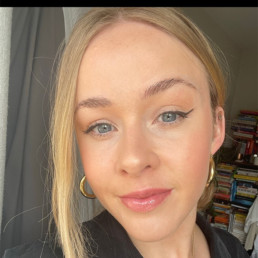
Written by Jessica Tacon
Jessica Tacon is second in charge of the English Department at City of London Academy Highgate Hill and is a member of NATE’s (National Association for the Teaching of English) ‘Reviewing Literature’ working group. She created The Right Writing campaign which aims to improve racial diversity in English Education.
Knee-jerk: “a quick reaction that does not allow you time to consider something carefully”
When a topic or issue becomes present in the public eye (often despite having always been of paramount importance, as is the case with diversity and inclusion in education) or it begins to feel more urgent, there can be pressure to actively resist or even just to react.
The pressure that I am referring to here comes from the expectation that education should be diverse and inclusive, something which has failed to be considered over decades. The pressure point is the realisation of this failing; the need to respond becomes pressurising as organisations need to be seen as doing the ‘right’ thing.
But the bottom line is that schools absolutely must not be exhibiting knee-jerk or quick-fix solutions to improving the diversity and inclusion of education. We need to make it a priority to find that beautiful balance between speed and solutions; remember, the first organisation to make changes in the way of diversity and inclusion is not necessarily the organisation doing the work most properly.
Making time, not taking time
Showing support for a cause without taking action at first can be a good thing. Note I said “can”. Far too many organisations, schools included, have used the excuse of wanting to ‘take their time’ as a guise for the fact that, actually, diversity and inclusion isn’t their priority. To this aim, time must be carved out at a systemic level to plan, implement and maintain changes in the education sector.
What can this look like? In reality there isn’t a one size fits all approach, it can look like many things. For specific questions to help schools to approach changes or to reflect on whether their current approach(es) are purposeful in the ways that truly matter, please see the full version of this article on the Pearson website.
With so many pressures on our time and headspace, tokenism, virtue-signalling and ‘quick’ fixes (which usually fix very little) can be tempting. But when we look at the absolutely unarguable benefits of a truly diverse and inclusive education, we cannot afford to not consider every single aspect of the above questions in everything that we do.
Evaluating English
Let’s look at the subject of English as an example. English A Level uptake has been declining for some time; research is still being done as to why but initial findings show that students do not feel that English is relevant for them or offers them career pathways. In 2018/19, only 19% of students who took English Literature at A Level were Black, Asian or of a Minority Ethnicity (Source: GOV.uk available on request).
Where does this lack of students studying English at A Level come from? In 2018 The Runnymede Trust found that nearly 92% of teachers in state funded schools were White, in 2020 Publishing Perspectives found that only 13% of people working in the publishing industry were Black, Asian or of a Minority Ethnicity and it is not unusual for a pupil to leave school having never studied a book by a Black author, as shown in research carried out by Penguin Random House. It does not take too much evaluation to see the vicious cycle that has been created: everywhere that young people turn they do not see themselves. This forms one example of why all the aforementioned changes need to happen, if it even needed to be pointed out in the first place.
A real reflection
As the writer Junot Díaz puts it:
“You know, vampires have no reflections in a mirror? There’s this idea that monsters don’t have reflections in a mirror…It’s that if you want to make a human being into a monster, deny them, at the cultural level, any reflection of themselves. And growing up, I felt like a monster in some ways. I didn’t see myself reflected at all.”
What Díaz describes here about representation is one facet of these changes; schools must look beyond “representation, and the pitfalls of tokenism, to thinking about how schools can be proactive in tackling racism” as The Runnymede Trust puts it.
Ultimately, what we are offering in educational settings is not truly an education until every aspect of education has changed to represent, include and celebrate every child. We are already behind, now we must come together and push forward diversity. There is no other option.
Take Back the Narrative: Reflections on #DiverseEd Conference

Written by David Church
David is an LGBTQ+ education consultant and former Deputy Head Teacher. He has over 10 years experience in education and is passionate about supporting schools to develop an LGBTQ+ inclusive culture and curriculum. Outside of education, David is a Regional Ambassador for It Gets Better UK.
Attending the #DiverseEd Conference in Bristol on Saturday felt perfectly timed. The backdrop of recent developments from the UK government regarding the trans community weighed heavily on my mind as I prepared for the day ahead. It seemed as if the trans community was under siege from multiple angles: teachers potentially being allowed to discriminate against trans young people in schools (https://www.thepinknews.com/2023/09/23/ehrc-guidance-trans-misgendering-pupils-schools/) and the proposed ban on trans women from women’s wards (https://www.theguardian.com/society/2023/oct/03/trans-hospital-patients-in-england-to-be-banned-from-female–and-male-only-wards).
As a cisgender gay man who had previously faced adversity under the infamous Section 28 (and the legacy since), I felt a deep empathy for the trans community, witnessing their increasing vulnerability and the reported surge in hate crimes against them (https://www.gov.uk/government/statistics/hate-crime-england-and-wales-2022-to-2023/hate-crime-england-and-wales-2022-to-2023).
As an LGBTQ+ education consultant, I was acutely aware that action was needed to ensure the safety of trans+ children, young people, and staff in schools. Fortunately, the conference offered a range of sessions on just this, highlighting the need for greater trans inclusion & diversity.
Every session I attended resonated with me on both a personal and professional level, but my mind was consumed with the urgent need to address the ongoing challenges faced by the trans community.
The first workshop I attended was led by Sarah Bonnell School, focusing on social justice in schools and empowering students to enact change within their communities. Their discussion of “cold anger” as a catalyst for change struck a chord with me (https://www.psychologytoday.com/gb/blog/brave-talk/202109/4-types-anger-everyone-should-know-about). This anger, when harnessed, could drive the transformation needed to combat the prevailing discourse around trans inclusion.
Equally, Shaun Dellenty’s keynote, highlighted the importance of challenging the narrative of fear and division, emphasising that we are stronger together, whether or not we identify as trans. The theme that stuck in my mind: How do we channel this anger and negative energy into positive action?
Similarly, in Bennie Kara’s keynote, the power of stories to reshape narratives was explored. She discussed how we need to move beyond viewing the trans community as victims or dangerous (a perception which has continuously been fed by media and entertainment). The history of LGBTQ+ rights is full of unsung heroes such as Marsha P. Johnson and Sylvia Rivera, who spearheaded the original Stonewall uprising. Yet, their stories are often overlooked in the narrative of our school curricula.
It is imperative that we teach about these individuals to reframe the narrative and challenge prejudices and biases. This will foster a more respectful society, one that goes beyond mere tolerance to genuine acceptance of every individual, regardless of their identity.
Jo Brassington, in their session on trans and non-binary inclusion in schools, passionately reminded us that silence and indifference regarding trans+ inclusion make us complicit. It reminded me of the words of David Morrison, Chief of Army in the Australian Army, which echo this sentiment: “The standard you walk past is the standard you accept.”
This is not about understanding what it means to be trans but about having compassion and acceptance for every trans person; knowing them as individuals and hearing their story. Stories have been central to human culture since time began, and it is now time to reshape these stories in the public eye. As agents of change, we must stand with the trans community, working towards a compassionate view that acknowledges them as individuals.
The #DiverseEd Conference offered a glimpse into the power of collective action, empathy, and storytelling to take back the narrative, ensuring that the voices and experiences of the trans community are heard, respected, and valued. We, as educators, have a unique opportunity to lead this transformation, shaping a more inclusive and compassionate society by ensuring our curriculum fosters a positive narrative of a range of trans people; from the books we read, to the significant role models we explore and the policies we have in place. Taking back the narrative is not just a goal; it’s a collective responsibility that we must all be conscious about in our schools.
“But is it age-appropriate?”
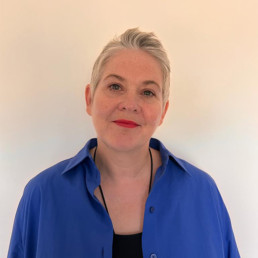
Written by Gerlinde Achenbach
Gerlinde Achenbach is a senior education consultant and former primary headteacher. Her career spans more than 35 years, with over 30 years teaching in schools. Since 2021 she has been supporting schools across the UK with Equity, Diversity & Inclusion, specifically LGBTQ+ inclusion. Her expertise is in leadership and changing school culture.
It’s now 20 years since Section 28 was repealed in England yet in primary schools we’re still, it seems, reluctant to talk with young people about being lesbian, gay, bisexual, trans or more. Some of us can’t get past the LGBT+ acronym, never actually defining what each letter stands for.
“Can I say ‘gay’ in Year 2?” one lead teacher for EDI was asked recently. We were talking during a recent 1:1 coaching session on developing best LGBT+ inclusive practice across the school. Deeply frustrated, the teacher bemoaned her experience with colleagues: “Some of them won’t include it beyond PSHE. Others never get round to it, telling me they’ve run out of time.”
Many primary class teachers are fearful of parental backlash in front of groups of other parents and their children. Some know that their senior leader colleagues are just as wary. And it’s true, this is one area where some parents and carers often feel emboldened to speak their mind. It’s embarrassing to be on the receiving end and, if you’re not confident about why we’re including LGBT+ themes in our learning and our environments, it’s easier to put your head in the sand. But let’s not forget that it’s statistically very likely that every family will have someone – parent, uncle or aunt, sibling, cousin or grandparent – who is lesbian, gay, bisexual, trans, queer or more.
“We want to make sure it’s age appropriate…”, say primary schools.
The DfE’s compulsory guidance on RSE came into force in September 2020, stating, ‘Primary schools are enabled and encouraged to cover LGBT content if they consider it appropriate to do so.’
With an independent review currently in progress to ‘advise the Secretary of State for Education on what is appropriate to teach in relationships and sex education and health education, and at what age’ , the stakes for ‘age-appropriate’ are high.
Of course, it’s important that the curriculum is appropriate for the age and experience of the children in each year group. But let’s not forget that when we talk about equity, diversity and inclusion, we’re moving beyond curriculum into the realm of whole school culture. The reservations we may have about being LGBT+ inclusive in younger year groups do not sit well with a culture of inclusivity and belonging. As a Primary Headteacher, I know that the majority of primary schools now include at least a handful of same-sex parented families, and often at least one child questioning their gender. That’s not forgetting the afore-mentioned LGBT+ relatives and friends. Surely we owe it to all the children living in LGBT+ families to see their own lived experience validated by our practice and provision? At the very least, our culture and curriculum should reflect and represent our LGBT+ children, both those who know it already and those who will know it soon enough. It’s our moral duty.
So, what could be more appropriate, for EYFS up, than talking about how families are made up differently, and that they have love for each other in common? Quite simply it is appropriate to have a curriculum where we share stories with young children about families and individuals who may dress, speak, identify or love differently from those they know, whilst talking about kindness and respect. We must also surely help children try to understand the injustice of being discriminated against, or harmed, simply for loving someone of the same gender.
We know that learning about sexual orientations other than heterosexuality does not ‘make you gay’, any more than learning that some people question the gender assigned them at birth ‘makes you trans’. Young people are discerning and knowledge is power. If any of the above applies to them, they will learn about it in a safe, accepting space. If it doesn’t apply, they have learned respect and compassion for others. Is it then morally acceptable to put our heads in the sand when we know that through educating our children, we educate our families and our communities?
Put simply, LGBT+ inclusion is about showing respect and compassion for all LGBT+ people as equal members of our diverse school and wider communities. It’s about being included in every aspect of school life and knowing you belong.
It’s always appropriate, at every age.
Environment and Identity: A Fragile Balance
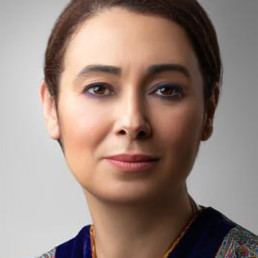
Written by Rachida Dahman
Rachida Dahman is an international educator, a language and literature teacher, and an educational innovator. She started her career in Germany as a teacher trainer advocating the importance of relationships above academics. She then moved to Luxembourg where she teaches German language and literature classes to middle and high school students. She is an award-winning poet, co-author of the best-selling book, ATLAS DER ENTSCHEIDER Entscheiden wie die Profis- Dynamik, Komplexität und Stress meistern.
In a complex world with complex problems, young people are struggling to uncover their identities. Social media and social constructs simplify thinking into binary perspectives that are limiting their capacities to grow and develop an understanding of themselves and the world. Unfortunately, some school curricula and environments may be contributing to this growing problem that directly impacts student wellbeing.
So much of students’ worlds seem to fall into a good/bad, right/wrong, preconstructed view of what they should think, believe, feel, and who they should or should not be. In this binary construct, students are not able to explore their own perceptions, opinions, or understandings because they have not had the freedom to develop the ability to observe, ask questions, discuss, and learn about differing perspectives in a constructive way. Schools should strive to create an environment that welcomes and encourages students to share, explore, and grow. In order for them to feel safe to do so, the atmosphere must not be argumentative. Rather, it must be one that approaches differences from a lens of love and learning.
It may seem easier to avoid discussing controversial topics in order to steer away from conflict and difficulty that stir emotions. However, when we participate in this avoidance, we miss out on an opportunity to teach students how to explore their feelings, have rigorous, meaningful conversations, and learn from those with differing viewpoints in a positive way. By modeling an avoidance behavior, we are inadvertently supporting this binary way of thinking that leads to a hindrance in student growth. In order to assist in students’ development, schools can create an environment where people are able to discuss controversial subjects in a respectful way that comes from a place of learning, understanding, and growing rather than judgment.
Schools should be a safe place for contemplation, evaluation, and learning and not one that prescribes what students should think and how they fit into a pre-described way of being. This freedom, or lack thereof, has a direct impact on student wellbeing. Educators should be inviting students each morning to feel strong and capable, supporting them in framing their own personalities and identities. In order to do that, they must feel safe sharing who they are in an environment designed to listen and learn without fear of others jumping into a defensive or attack mode. A safe space environment is cyclical in nature. In order for students to feel heard without judgment they must also learn to listen without judgment. One cannot occur without the other.
Students must learn to find value in the opinions, thoughts, and beliefs of others. Educators can assist in this learning by teaching students that there are 101 perspectives on the same problem. Rather than always presenting a definitive answer, issues can be explored from various angles. In addition, we must teach and model the use of kind words that are full of love rather than aggression, and that strive to unite rather than divide. As you enter your schools every day, ask yourselves these questions:
- Am I encouraging differing viewpoints and creating a safe space for them to be shared?
- Am I modeling a behavior of openness for judgment-free conversations?
- Am I demonstrating kind, accepting language?
- How can I help students to avoid defensive or aggressive language and responses?
The formation of identity and wellbeing is fragile. Schools have a responsibility to create environments that are conducive to open discussions, free from aggression, and safe for honest and authentic conversations geared toward learning, understanding, and growth. It is through this climate of successful cooperation and mutual support that we can counteract the negative impacts of binary thinking and help students create healthy identities.
10 Engaging Diversity Books for Children: Promoting Inclusion and Understanding
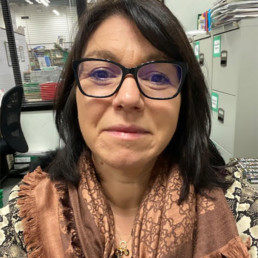
Written by Rachelle Carter
Rachelle Carter is co-director of Madeleine Lindley Ltd, a key children’s book supplier based in Chadderton, Oldham. Its staff are experienced and well-equipped to help primary schools rejuvenate and refresh their class libraries with the latest and most engaging books. The business has played a vital role in supplying many of the UK's primary school libraries for over 35 years.
Reading across a range of cultures and experiences not only broadens children’s worldviews but also nurtures an appreciation of the wider world. Being exposed to a range of books that cover different representations allows children to feel connected and included, and allowing a child to explore various narratives through books through a multitude of narratives is a cornerstone in exposing a child to inclusion and understanding.
Here, children’s literacy specialist Madeleine Lindley Ltd explores ten notable books that celebrate diversity, promote inclusivity, and stimulate the imagination. For primary school teachers, this list can serve as a great starting point from which to build a classroom library or wider school library with books that promote inclusion. It is important to remember that the representation of diversity will differ from classroom to classroom. Use this list to explore the types of books you can consider for your classroom, and explore the broad range of diversity and inclusion books yourself to find the perfect books for your children.
1. Uncle Bobby’s Wedding by Sarah S. Brannen
Uncle Bobby’s Wedding takes a delicate approach to introduce the concept of same-sex marriages. As the story unfolds, young readers journey alongside Chloe, the protagonist who initially fears she will lose her beloved Uncle Bobby when he announces his wedding. The story’s gentle narrative helps children understand that love transcends all boundaries and that families come in all shapes and sizes. Moreover, it instils the idea that a change does not equate to loss, a valuable lesson for children.
2. The Best Me! by Marvyn Harrison
In The Best Me!, Marvyn Harrison promotes the importance of self-esteem and individuality, focusing on the central character’s journey, Nia. Nia learns to embrace her unique identity and sees the beauty in everyone’s differences, breaking away from societal expectations. The book delivers the fundamental message that everyone should feel empowered to be their true selves.
3. The Proudest Blue by Ibtihaj Muhammad and S.K. Ali
The story revolves around Asiya’s first day of school, with her wearing a bright blue hijab. Her younger sister, Faizah, sees Asiya’s hijab as a symbol of pride and strength. The Proudest Blue introduces children to the concept of faith in oneself and the richness of cultural diversity, helping them recognise and respect religious practices that might differ from their own.
4. Grandad’s Camper by Harry Woodgate
Grandad’s Camper presents a loving relationship between Grandad and Gramps. Following Gramps’s passing, Grandad ceases his adventuring until his granddaughter reignites his passion. The book addresses LGBTQ+ relationships and loss sensitively, fostering understanding that love is universal, extending beyond conventional family setups.
5. Speak Up! by Nathan Bryon
Speak Up! is a compelling narrative about using one’s voice to champion what’s right. The protagonist, Rocket, inspires children with her bravery, as she stands up for her community’s park. This story encourages children to be courageous, fostering a sense of responsibility, and motivating them to stand up for what they believe in.
6. Just Like Me by Vanessa Brantley-Newton
Just Like Me is a collection of poetic narratives, celebrating diversity, self-love, and acceptance. Vanessa Brantley-Newton’s character-driven poems encourage children to explore and celebrate their identities, recognising that everyone’s story is unique and equally important.
7. The Bubble Boy by Stewart Foster
The Bubble Boy introduces the character of Joe, a boy with severe combined immunodeficiency who lives in a sterile environment. This narrative fosters empathy, giving children a glimpse into the lives of those living with health conditions, ultimately encouraging them to be understanding and respectful.
8. Jamie: A Joyful Story of Friendship, Bravery and Acceptance by L. D. Lapinski
Jamie paints a picture of an inclusive world where each individual is unique and cherished. The story explores themes of friendship, bravery, and acceptance, helping children appreciate the diverse characteristics that make us all human.
9. Fight Back by A. M. Dassu
Fight Back explores the resilience of a young refugee, teaching children about the realities of displacement and courage. This book encourages understanding of global issues and empathy towards individuals who’ve experienced adversities beyond their control.
10. No Ballet Shoes In Syria by Catherine Bruton
This book captures the experiences of Aya, a refugee girl in Syria who finds solace in the world of ballet. No Ballet Shoes In Syria allows children to empathise with the struggles of refugees and appreciate the power of passion, dedication, and the arts.
Find diversity books for your library
Cultivating an environment that values diversity is an important part of fostering an enriching, inspiring, and inclusive environment for your children. To help you in doing this, Madeleine Lindley Ltd helps curate an inclusive, engaging, and ever-evolving reading environment for your primary school. By filling your library with books that celebrate differences, you are not just introducing children to a multitude of perspectives, but also instilling a lifelong love for reading.
The Pen and The Community: What a football cage taught me about community
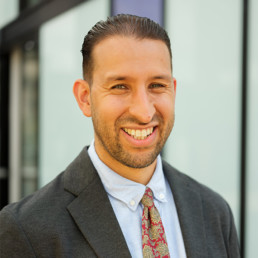
Written by Mohamed Abdallah
With almost two decades of experience, Mohamed started his journey in youth work and pupil referral units before spearheading groundbreaking inclusive practices and systems as a leader in an 'Outstanding' all-through mainstream school. Driven by a relentless commitment to positive change, Mohamed now dedicates his efforts to collaborating with school leaders across the nation as the Head of the Inclusive Leadership Course at The Difference.
“We are meaningful as individuals only through our interconnections”
Alexander and Conrad (2022)
The “success” I experienced as a youth worker, a practitioner in a Pupil Referral Unit, and as a senior leader in mainstream schools has at times been credited to me or my leadership, and that often makes me feel uneasy.
Partly because I experience imposter syndrome on a regular basis. But mostly because everything that “I have achieved” only happened through collective efforts.
It was only achievable because a community of people pooled together their desire, commitment, skills and knowledge to make a difference to the lives of children.
And this is why I don’t believe in individual heroes or saviours.
It sounds like I’m being a little contrary, but I hope that when you get to the end of this post it will be clear that what I am proposing instead is so much more liberating, freeing us from the idea that success is a purely individualistic journey. I think the opposite is true, that the collective efforts are more empowering than the individual endeavours of one.
KEY INGREDIENTS
Most of my childhood and teenage years were spent on Studley Estate in Stockwell. And to this day, that time remains one of the most significant chapters of my life. And it is the sense of community I experienced there which has become an integral part of my identity. It influenced how I grew, how I socialise, how I make decisions, and where I feel a true sense of belonging. It is also where I worked out what my skills and qualities are and helped me develop a wealth of knowledge about my community.
Throughout my life, whether as a child on Studley Estate, a youth worker in the community, or as a senior leader within schools, there are three key ingredients that formed an active and healthy community which stood out for me. These three ingredients are: DISCOVERY, COLLABORATION and ACTIVITY
Let me share their significance using a personal example from my childhood.
THE PEN
The Pen, the football cage right in the heart of our estate.
Discovery
As a child, I discovered a community of children who played regularly in the Pen and shared the same passion for football. It became our meeting point after school and on weekends, it fulfilled our need for play and socialisation through football. The discovery of the Pen and our shared love for football became our major connection.
Within our little community of talented footballers, we recognised and celebrated our differences. Some of us supported different teams (I’m a lifelong Liverpool fan), but our shared passion for football forged a bond that transcended those differences. We had an instant connection, rooted in our passion and knowledge of football and our ability to play the game.
Each of us brought something unique to the table. I play as a defender, and that was a valuable asset in a team full of players who wanted to play in attack. We recognised the unique skills and qualities that every player brought which in turn helped us create a space where everyone felt safe, where a shared passion and a common purpose thrived. We discovered our purpose, to have fun through the medium of football.
Collaboration
Looking back, reflecting on us as young children, it was incredible how well we collaborated with one another. We organised ourselves into teams, we agreed on how long a game should be, and we always accepted the result of a game without any adult involvement.
The centre of the Pen became our arena for collaboration, where we waited until everyone who wanted to play had arrived before selecting teams. It was a joint effort, facilitated by everyone present in The Pen at that moment. We recognised that each person who joined us was not only a football player but also an active agent in creating the ideal space for play.
We understood, even at a young age, that leadership could emerge from anyone, regardless of age, background, or footballing ability. We acknowledged the leadership potential within us all.
Activity
And then, we played, we mobilised our assets into collective activity.
We acted collectively in our game, where there was fairness, equity and trust. And though the game was always competitive, we always prioritised fun. Without the intervention of adults, we treated each other with mutual respect, accepting the game’s outcome and naturally resolving any conflicts that arose.
This collective activity involved every single one of us, as we recognised that to play a game of football it required the collective participation of all of us.
We discovered each other and our assets, collaborated in shaping teams, what type of game we would play, and engaged in the activity of the game in a way that was organic and purposeful.
COMMUNITY
These key ingredients can work for any community, including school communities.
Discovery is at the heart of every strong community.
It means discovering how and where people may have a sense of belonging, forming friendships, and feeling supported in their growth and development, discovering their own assets and capabilities. It’s about discovering spaces where people can come together, share their experiences, and provide a nurturing environment for children.
Opportunities to discover spiritual connection, helping people to collectively share values, wisdom, their gifts and connect to much needed resources, services, and opportunities for personal and community development.
When we foster genuine discovery which lead to connections among different groups, we create a tapestry of relationships that weaves us closer together.
Collaboration is essential for community growth and progress.
It means working together on projects, initiatives, and events that have a positive impact on people’s lives. Sharing skills, knowledge, and experiences, and creating a collective pool of wisdom and expertise. Collaborating contributes to the support of one another, exchanging ideas that work toward common goals addressing social issues to promote inclusivity, and create a sense of unity.
When we collaborate, we tap into the diverse strengths of our community and achieve outcomes that are greater than what any individual or group could accomplish alone.
Activity is about taking collective action and empowering every individual within the community to contribute to its well-being and success. It means staff, children and families being active participants in decision-making processes, having their voices heard, and realising their potential as change-makers.
They can collectively act by engaging in volunteerism, advocacy, and community-building activities alongside the local community. Acting together can foster a culture of empathy, respect, and social responsibility within school communities. And in turn promoting social justice and supporting those in need by empowering them through their assets. Most importantly a school and local community taking ownership of their community’s future.
When we act collectively, we create a sense of agency and shared responsibility, leading to a stronger, more resilient community.
BY THE COMMUNITY
To be a community member is to care, to take responsibility, to acknowledge your collective power.
To be a community member is to cultivate meaningful connection to the numerous relationships and institutions on our doorstep.
So, I want to return to where I started.
Our communities are shaped by our interactions, our relationships, and the wisdom we share with one another. When we achieve something, it is because we have worked with others, supported one another, shared resources and acted together.
And this is why I don’t believe in individual heroes, whether they are people or institutions. Because it is the collective efforts of many that is heroic. It is our collective power that creates sustainable change.
Not a single person.
It requires collective risk taking to effect change. It doesn’t happen overnight, it takes time, but it is sustainable. It is designed by the community; it is done by the community, and it is sustained by the community.
If you are curious to learn more about Drawbridge and how we can help schools foster meaningful community engagement? Feel free to reach out to me at mohamed@drawbridge.org.uk.

